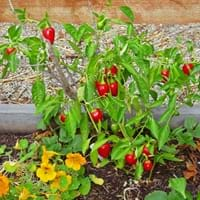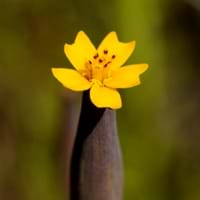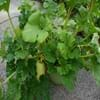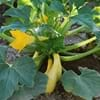Type
Vegetable
Flowering Plants
Origin
Mexico, Central America, South America
Mexico, Central America, South America
Types
Not Available
Not available
Habitat
Open areas
Cultivated Beds
USDA Hardiness Zone
Not Available
8-11
AHS Heat Zone
12-1
12 - 1
Sunset Zone
A1, A2, A3, H1, H2, 1a, 1b, 2a, 2b, 3a, 3b, 4, 5, 6, 7, 8, 9, 10, 11, 12, 13, 14, 15, 16, 17, 18, 19, 20, 21, 22, 23, 24
A1, A2, A3, H1, H2, 1a, 1b, 2a, 2b, 3a, 3b, 4, 5, 6, 7, 8, 9, 10, 11, 12, 13, 14, 15, 16, 17, 18, 19, 20, 21, 22, 23, 24
Habit
Upright/Erect
Cushion/Mound-forming
Flower Color
White
Yellow, Orange, Gold, Orange Red
Flower Color Modifier
Bicolor
Bicolor
Fruit Color
Red, Green
Not Available
Leaf Color in Spring
Dark Green
Green
Leaf Color in Summer
Green
Green
Leaf Color in Fall
Green, Black
Green
Leaf Color in Winter
Dark Green
Light Green
Plant Season
Spring, Summer, Fall
Spring, Summer, Fall
Sunlight
Full Sun
Full Sun, Partial Sun
Type of Soil
Loam, Sand
Loam, Sand
The pH of Soil
Neutral
Acidic, Neutral
Soil Drainage
Well drained
Well drained
Bloom Time
Spring, Summer, Indeterminate
Indeterminate
Tolerances
Drought
Drought
Where to Plant?
Container, Ground
Ground
How to Plant?
Seedlings, Transplanting
Divison, Layering, Stem Cutting
Plant Maintenance
Medium
Medium
Watering Requirements
Do Not over Water
Requires regular watering
In Summer
Lots of watering
Lots of watering
In Spring
Moderate
Moderate
In Winter
Average Water
Average Water
Soil pH
Neutral
Slightly Acidic
Soil Type
Loam, Sand
Sandy
Soil Drainage Capacity
Well drained
Well drained
Sun Exposure
Full Sun
Part sun
Pruning
Remove damaged leaves, Remove dead branches, Remove dead leaves
Remove damaged leaves, Remove dead branches, Remove dead leaves
Fertilizers
All-Purpose Liquid Fertilizer
All-Purpose Liquid Fertilizer
Pests and Diseases
Not Available
Red blotch
Plant Tolerance
Drought
Drought
Flower Petal Number
Single
Single
Fragrant Bark/Stem
No
Yes
Foliage Texture
Medium
Fine
Foliage Sheen
Glossy
Matte
Attracts
Not Available
Butterflies
Allergy
Hives, Rash
Not Available
Aesthetic Uses
Showy Purposes
Beautification, Decorating walls, Hanging Basket, Showy Purposes, Used as an interior landscaping species
Beauty Benefits
Not Available
Not Available
Environmental Uses
Air purification
Air purification, Food for birds
Medicinal Uses
cholesterol-lowering, Low calories, Vitamin C
Cancer, Diarrhea, Hepatitis, Inflammation, Wounds
Part of Plant Used
Fruits
Flowers
Other Uses
Used As Food
Air freshner, Condiment, For making oil for cosmetics, Garland, Making Sweet Scented Oil, Medicinal oil, Used as an ointment, Used as Ornamental plant, Used for fragrance, Used for its medicinal properties, Used for Landscaping
Used As Indoor Plant
No
Insignificant
Used As Outdoor Plant
Yes
Yes
Garden Design
Bedding Plant, Container, Edible, Herb / Vegetable, Mixed Border, Tropical
Dried Flower, Landscape, Lawns and Turf
Botanical Name
CAPSICUM annuum 'Cherry Bomb'
Tagetes subulata
Common Name
Cherry Bomb Pepper, Cherry Pepper
Tagetes Sabulata
In Hindi
Cherry Bomb Pepper
Tagetes subulata
In German
Cherry Bomb Pfeffer
Tagetes Subulata
In French
Cherry Bomb Pepper
Tagetes Subulata
In Spanish
Bomba de cereza Pimienta
Tagetes Subulata
In Greek
Cherry Bomb Πιπέρι
Tagetes Subulata
In Portuguese
Cherry Bomb Pimenta
Tagetes Subulata
In Polish
Cherry Bomb Pepper
Tagetes Subulata
In Latin
Cherry Bomb Pepper
Tagetes Subulata
Phylum
Anthophyta
Tracheophyta
Class
Eudicotyledones
Magnoliopsida
Order
Solanales
Asterales
Family
Solanaceae
Asteraceae
Clade
Angiosperms
Angiosperms, Asterids, Eudicots
Tribe
Not Available
Tageteae
Subfamily
Not Available
Asteroideae
Number of Species
Not Available
Not Available
Season and Care of Cherry Bomb Pepper and Tagetes Subulata
Season and care of Cherry Bomb Pepper and Tagetes Subulata is important to know. While considering everything about Cherry Bomb Pepper and Tagetes Subulata Care, growing season is an essential factor. Cherry Bomb Pepper season is Spring, Summer and Fall and Tagetes Subulata season is Spring, Summer and Fall. The type of soil for Cherry Bomb Pepper is Loam, Sand and for Tagetes Subulata is Loam, Sand while the PH of soil for Cherry Bomb Pepper is Neutral and for Tagetes Subulata is Acidic, Neutral.
Cherry Bomb Pepper and Tagetes Subulata Physical Information
Cherry Bomb Pepper and Tagetes Subulata physical information is very important for comparison. Cherry Bomb Pepper height is 61.00 cm and width 61.00 cm whereas Tagetes Subulata height is 30.50 cm and width 30.50 cm. The color specification of Cherry Bomb Pepper and Tagetes Subulata are as follows:
Cherry Bomb Pepper flower color: White
Cherry Bomb Pepper leaf color: Dark Green
Tagetes Subulata flower color: Yellow, Orange, Gold and Orange Red
- Tagetes Subulata leaf color: Green
Care of Cherry Bomb Pepper and Tagetes Subulata
Care of Cherry Bomb Pepper and Tagetes Subulata include pruning, fertilizers, watering etc. Cherry Bomb Pepper pruning is done Remove damaged leaves, Remove dead branches and Remove dead leaves and Tagetes Subulata pruning is done Remove damaged leaves, Remove dead branches and Remove dead leaves. In summer Cherry Bomb Pepper needs Lots of watering and in winter, it needs Average Water. Whereas, in summer Tagetes Subulata needs Lots of watering and in winter, it needs Average Water.





